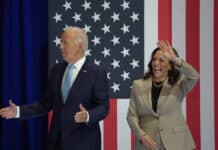(The Center Square) – More than half of all U.S. consumers lived paycheck-to-paycheck last month, according to a new LendingClub report released on Monday.
The LendingClub, a peer-to-peer lending company, reports that 58% of U.S. consumers were living paycheck-to-paycheck last month, a 4% increase from last year.
With inflation rates sitting at a 40-year high, taxpayers continue to struggle financially as the economy begins to slow, as illustrated by the latest decrease in retail sales last month.
“Consumers have experienced a tough last couple of years as different factors have affected their financial lifestyle and there seems to be little relief in sight,” said Anuj Nayar, LendingClub’s financial health officer.
Sixty-five percent of all paycheck-to-paycheck consumers report having “experienced a financially stressful event in the past three years, with sudden income disruptions such as losing a job being the most common,” the LendingClub says.
Many of these financial disruptions, such as the loss of one’s job, arose because of the pandemic and its harmful economic effects, the LendingClub found.
Out of those reporting having experienced a financially stressful event, 77% say they struggle to pay their bills each month.
Half of the consumers living paycheck-to-paycheck say their salaries only cover basic expenses. Another 19% report spending more than they earned in the past six months.
Nayar said consumers could leverage credit as a financial tool to manage their expenses.
“Setting an automatic transfer to a savings account, even if it’s a small amount, can help you weather the next storm because it’s not if you’ll need the cash, but when. Credit can also be an effective tool to help with expenses during financially distressing events, but those struggling financially should exercise caution,” Nayar said.
“Credit card interest rates are rising, and, if you don’t intend to pay your bills in full monthly, you could potentially get into a steep revolving debt trap. For those looking for relief, consider refinancing high-interest debt into a lower cost installment loan.”


















